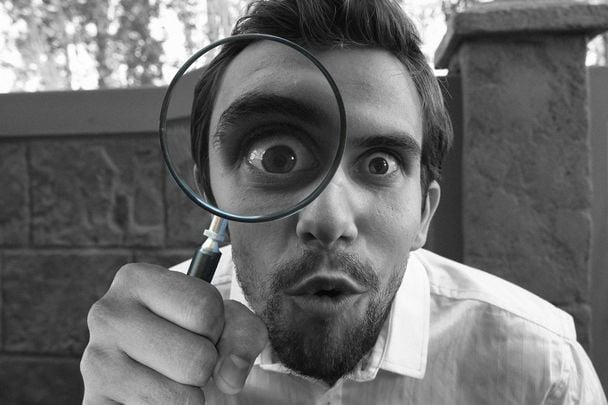What could be luckier than finding a penny and picking it up?... Finding an old Irish penny worth a fortune! Here's a guide to valuing your old coins.
Between the formation of the Republic of Ireland, the shift towards decimalization, and the introduction of the Euro, Irish currency underwent a great number of changes over the past 100 years, resulting in a number of coins that are now so rare they can fetch up to $13,200 at auction.
Many of these old Irish coins are also exceptionally beautiful, featuring symbols of Ireland and tributes to the country’s agricultural and agrarian wealth.
But how do you know whether an old Irish coin in your possession represents a small fortune in your hands? We consulted two of the most popular old Irish currency databases, OldCurrencyExchange.com and IrishCoinage.com to find out. For the purposes of this article, we’ll be looking at rare Irish coins issued 1928 – 1969 (pre-decimal coins) and coins issued 1969 – 2000 (decimal coins). There are of course older and significantly rarer examples, which you can learn more about here.
Read more
Pre-decimal old Irish coins
The first officially Irish coins were minted and rolled out in 1928, the result of years of planning by a committee headed by W.B Yeats, which dreamed up the designs for the coins: typically an Irish harp on one side, and an agricultural symbol on the other side, including pigs, hens, horses, and wolfhounds. These coins functioned on the Lsd (pre-decimal) currency system, of pounds, shillings, and pence. Under this system, there were 12 pence in a shilling and 20 shillings, or 240 pence, in a pound.
Listed below are the most valuable (€20.00 or more) in each category of pre-decimal coin. These are the 2015 values as listed by the O’Brien Coin Price Guide on OldCurrencyExchange.com Note that value greatly depends on the condition of the coin, with coins that were never circulated typically being the most valuable. Proof FDC coins are practically always the most valuable, but you will most likely know if you are in possession of one of these as they come directly from the mint and are specially packaged for collectors.
Pre-decimal farthing
- 1930, uncirculated: €25.00
- 1931, uncirculated: €28.00
- 1932, uncirculated: €32.00
- 1933 uncirculated: €22.00
- 1935 extra fine condition: €22.00; uncirculated: €35.00
- 1936 extra fine condition: €25.00; uncirculated: €42.00
- 1940 uncirculated: €25.00
- 1943 uncirculated: €20.00
- 1944 uncirculated: €20.00
- 1946 uncirculated: €20.00
- 1949 uncirculated: €25.00
- 1953 uncirculated: €25.00
- 1959 uncirculated: €25.00
- 1966 uncirculated: €20.00
Pre-decimal halfpenny
- 1933 extra fine condition: €45.00; uncirculated: €180.00
- 1935 extra fine condition: €50.00; uncirculated: €150.00
- 1937 uncirculated: €50.00
- 1939 extra fine condition: €50.00; uncirculated: €125.00
- 1940 extra fine condition: €40.00; uncirculated: €110.00
- 1946 uncirculated: €55.00
Pre-decimal penny
- 1928 uncirculated: €20.00
- 1931 uncirculated: €30.00
- 1933 uncirculated: €70.00
- 1935 uncirculated: €25.00
- 1937 uncirculated: €30.00
- 1938: These are exceptionally rare – the coins used to test the new “Eire” legend, which replaced “Saorstat Eireann” (Irish Free State). Only two are believed to be in existence, worth €12,000 - €35,000. Consequently, there are many fakes. Read more here.
- 1940 extra fine condition: €50.00; uncirculated: €280.00
- 1941 uncirculated: €24.00
- 1942 uncirculated and missing a chick in the imagery: €25.00
- 1943 uncirculated: €25.00
- 1948 uncirculated and missing a chick in the imagery: €25.00
Pre-decimal threepence
- 1928 uncirculated: €20.00
- 1933 very fine condition: €20.00; extra fine condition: €60.00; uncirculated: €130.00
- 1934 uncirculated: €32.00
- 1935 very fine condition: €25.00; extra fine condition: €75.00; uncirculated: €150.00
- 1939 very fine condition: €40.00; extra fine condition: €80.00; uncirculated €175.00
- 1940 uncirculated: €30.00
- 1942 uncirculated: €20.00
- 1943 uncirculated: €35.00
- 1946 uncirculated: €35.00
- 1948 extra fine condition: €25.00; uncirculated: €50.00
- 1949 extra fine condition: €20.00; uncirculated: €20.00
Pre-decimal sixpence
- 1934 extra fine condition: €25.00; uncirculated: €75.00
- 1935 extra fine condition: €50.00; uncirculated: €150.00
- 1939 uncirculated: €40.00
- 1940 uncirculated: €30.00
- 1942 uncirculated: €30.00
- 1945 extra fine condition: €40.00; uncirculated: €100.00
- 1946 extra fine condition: €75.00; uncirculated: €200.00
- 1947 extra fine condition: €28.00; uncirculated: €80.00
- 1948 uncirculated: €50.00
- 1949 uncirculated: €40.00
- 1950 extra fine condition: €38.00; uncirculated: €85.00
- 1952 uncirculated: €25.00
- 1953 uncirculated: €22.00
- 1955 uncirculated: €28.00
- 1958 uncirculated: €30.00
- 1962 uncirculated: €40.00
Pre-decimal shilling
- 1928 uncirculated: €25.00
- 1930 very fine condition: €45.00; extra fine condition: €150.00; uncirculated: €300.00
- 1931 very fine condition: €45.00; extra fine condition: €100.00; uncirculated: €200.00
- 1933 very fine condition: €45.00; extra fine condition: €150.00; uncirculated: €300.00
- 1935 very fine condition: €25.00; extra fine condition: €75.00; uncirculated: €150.00
- 1937 fine condition: €25.00; very fine condition: €200.00; extra fine condition: €450.00; uncirculated: €850.00
- 1939 uncirculated: €25.00
- 1940 extra fine condition: €25.00; uncirculated: €50.00
- 1941 extra fine condition: €25.00; uncirculated: €50.00
- 1942 extra fine condition: €25.00; uncirculated: €50.00
Pre-decimal florin
- 1928 extra fine condition: €25.00; uncirculated: €45.00
- 1930 very fine condition: €75.00; extra fine condition: €125.00; uncirculated: €400.00
- 1931 very fine condition: €85.00; extra fine condition: €135.00; uncirculated: €450.00
- 1933 very fine condition: €65.00; extra fine condition: €135.00; uncirculated: €350.00
- 1934 fine condition: €25.00; very fine condition: €125.00; extra fine condition: €450.00; uncirculated: €950.00
- 1935 very fine condition: €75.00; extra fine condition: €125.00; uncirculated: €250.00
- 1937 fine condition: €25.00; very fine condition: €95.00; extra fine condition: €175.00; uncirculated: €350.00
- 1939 extra fine condition: €25.00; uncirculated: €45.00
- 1940 extra fine condition: €25.00; uncirculated: €45.00
- 1941 extra fine condition: €25.00; uncirculated: €55.00
- 1942 extra fine condition: €25.00; uncirculated: €55.00
- 1943: These are exceptionally rare because 1943 was the last year Ireland made 75% silver coinage. It is believed that only one bag, containing 1,000 of these still mostly silver Irish florins made it from the Royal Mint in London to Dublin. Most of them would make the reverse trip after the Royal Mint ordered them to be returned and melted, but 50 or so are believed to still exist. Read more here. Fine condition: €4,500.00; very fine condition: €6,500.00; extra fine condition: €12,500.00; uncirculated: €18,000.00
- 1951 uncirculated: €25.00
- 1954 uncirculated: €25.00
- 1955 uncirculated: €25.00
- 1959 uncirculated: €20.00
- 1961 uncirculated: €25.00
Pre-decimal half-crown
- 1928 extra fine condition: €25.00; uncirculated: €45.00
- 1930 very fine condition: €25.00; extra fine condition: €150.00; uncirculated: €300.00
- 1931 very fine condition: €30.00; extra fine condition: €175.00; uncirculated: €350.00
- 1933 very fine condition: €25.00; extra fine condition: €150.00; uncirculated: €300.00
- 1934 extra fine condition: €75.00; uncirculated: €150.00
- 1937 fine condition: €75.00; very fine condition: €250.00; extra fine condition: €750.00; uncirculated: €1,500.00
- 1939 extra fine condition: €25.00; uncirculated: €55.00
- 1940 extra fine condition: €25.00; uncirculated: €55.00
- 1941 extra fine condition: €35.00; uncirculated: €75.00
- 1942 extra fine condition: €35.00; uncirculated: €75.00
- 1943 These coins are very rare, and with a number of forgeries in recent years, it is not known how many are in existence. They were struck at the Royal Mint in 1943, but not issued to the public as the Central Bank of Ireland decided to change from the 75% silver coinage to CuproNickel. Most of the 1943 half-crowns were melted back at the Mint, but a few made their way into people’s hands first. Read more here. Good condition: €25.00; fine condition: €100.00; very fine condition: €400.00; extra fine condition: €1,000.00; uncirculated: €2,000.00
- 1951 uncirculated: €20.00
- 1954 uncirculated: €20.00
- 1955 uncirculated: €20.00
- 1959 uncirculated: €20.00
- 1961 uncirculated: €20.00
- 1961 mule coins: Not to be confused with a donkey/horse hybrid, in this case, a mule refers to a coin where the sides were made from two mismatched dies. In this case, during the 1961 re-striking of the half-crown, a die from the initial 1928 design, which had been improved in 1938, made its way into the production. Learn how to identify them here. Very fine condition: €25.00; extra fine condition: €130.00; uncirculated: €350.00.
Irish decimal coins
Ireland, along with Britain, officially switched from the Lsd currency system to the decimal currency system on February 15, 1971 – which became known as “Decimal Day.” The new five pence, ten pence, and fifty pence coins had been rolled out earlier, in 1969 and 1970. Under the decimal system, a pound came to be made up of 100 pence rather than 240 pence, as it had been in the pre-decimal days. In the years leading up to this, most of the pre-decimal coins had ceased to be distributed. Some of the new coins, including the halfpenny, penny and two pence coins featured ornamental birds inspired by designs found it Celtic manuscripts. In 1985, the halfpenny coin was discontinued, and in 1986 the twenty pence coin was introduced. The one pound (punt) coin was introduced in 1990. All other Irish pence coins were discontinued when the Irish euro coins were introduced in 2002. Today, Irish pence coins can still be exchanged for their equivalent value in euros at the Irish Central Bank. However, a select few are worth more than their face value. These are listed below.
Halfpenny
- 1985 – This was the year the halfpenny was discontinued, and the coins struck that year were supposed to be withheld from the public, but a few managed to escape. Fine condition: €20.00; very fine condition: €50.00; extra fine condition: €100.00; uncirculated: €450.00
- 1986 – None of these were ever released to the public, only directly from the mint to collectors in BU (“Brilliant Uncirculated”) sets, but a few have turned up over the years. Very fine condition: €25.00; extra fine condition: €50.00; uncirculated: €100.00
Penny
The most valuable of these is the 1975 uncirculated penny, at €5.50
Twopence
The most valuable of these is the 1976 uncirculated two pence, at €5.00
Five pence
The design of the Irish five pence coin changed in 1992: its diameter became smaller, and the design of the bull improved and changed directions.
Still, the most valuable of these are the 1974 and 1975 uncirculated five pence coins, worth €6.00.
Ten pence
Similar to the five pence coin, the size of the Irish ten pence coin was decreased and the design of the animal on the obverse side (in this case a salmon) was changed slightly.
- 1973 ten pence coins are worth slightly more than those from surrounding years with coins in very fine condition fetching €1.00; extra fine €6.00; uncirculated €12.00.
- 1986, the last year the old model of the ten pence coin was struck, is an even greater rarity: Fine: €4.00; very fine: €20.00; extra fine €75.00; uncirculated €150.00.
However, the rarest ten pence coins were those produced in 1992 for testing purposes. All vending machines in Ireland had to be recalibrated to accept the new, smaller coin, so engineers from Telecom Éireann, the Irish phone service, were given test coins to check public payphones with. They were supposed to be returned to the Central Bank, but not all were. Read more here. Good condition €1,000.00; fine condition: €3,500.00; very fine condition: €7,000.00; extra fine condition: €12,000.00; uncirculated: €15,000.00.
Twenty pence
In 1984, the Irish government announced that they would be releasing an Irish twenty pence coin. As would later be the case with the re-designed smaller ten pence coin, vending machines across Ireland had to be recalibrated to accept the new denomination. The Irish Central bank produced 500 test coins in 1985 so that businesses - again, mainly Telecom Éireann engineers – could test them. It has been estimated that 50 of those test coins were never returned to the bank, though today the whereabouts of less than 10 are known. They are exceptionally rare and valuable, though, of course, many forgeries exist. Read more here. Good condition €500.00; fine condition: €2,000.00; very fine condition: €4,000.00; extra fine condition: €8,000.00; uncirculated: €12,000.00.
Fifty pence
The rare years for the fifty pence coins are 1971 and 1986 because fewer were minted.
- 1971 fine condition: €2.00; very fine condition: €6.00; extra fine condition: €12.00; uncirculated: €25.00
- 1986 Good condition €6.00; fine condition: €12.00; very fine condition: €50.00; extra fine condition: €100.00; uncirculated: €2.00
Pound
The Irish pound coin was only produced for 10 years, from 1990 to 2000. The most valuable among these are the special commemorative coins, released to celebrate the 50th anniversary of the United Nations in 1995, and for the millennium. 1945-1995 U.N. Silver Proof coins in perfect condition are worth €250.00. Special millennium commemorative coins known as the Millennium Piedfort Silver Proof are worth €45.00.
The regular Irish one-pound coins for each year were inconsistent, as an undetermined number did not fully complete the engrailing process for the edge. These are slightly more valuable.
A 1990 proof regular (edge milled and engrailed) is worth €45.00 when in proof condition and its original case; and worth €6.00 when in simply uncirculated condition.
A 1990 coin is without an engrailed edge is worth €6.00 in very fine condition, €15.00 in extra fine condition, and €35.00 in uncirculated condition.
For other years, the most valuable coins are those without an engrailed edge. Unengrailed pound coins from 1994 and 1995 are worth €6.00 in fine condition, €12.00 in very fine condition, €25.00 in extra fine condition, and €50.00 in uncirculated condition.
Lastly, 2000 millennium pound coins without engrailed edges are worth €35.00 in extra fine condition and €75.00 uncirculated.
Have you ever found any special Irish coins among your or your family’s collections? Share your story in the comment section.
* Originally published in October 2016, updated in May 2022.




Comments